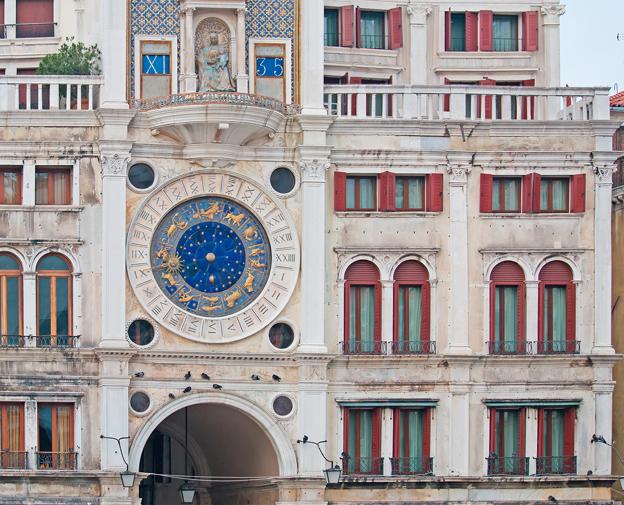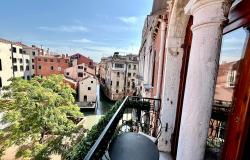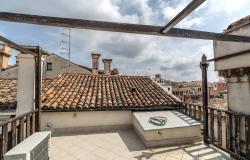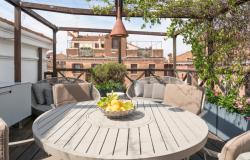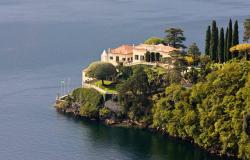Venice has many architectural landmarks that are instantly recognisable, and one of these must be the magnificent early Renaissance clock tower situated on the north side of Piazza San Marco, at the entrance that leads to the main shopping street of the city.
For over 500 years, this masterpiece of engineering has dominated the piazza, measuring in minutes the ebb and flow of the city’s history.
In 1493, Zuan Carlo Rainieri was commissioned to build a new tower and clock to replace the dilapidated old clock of Sant’Alipio on the north-west corner of the Basilica, however the decision to site it over the entrance to the Merceria didn’t come for a further two years. The diarist Marin Sanudo wrote in February 1499, “The clock on the Square was unveiled for the first time; above the street that leads into the Merceria, it is most beautiful and ingenious”.
The construction of the new tower marked a concise break with the layout and the architectural style of St. Mark’s Square. It rises on a rectangular base measuring 9 x 6 metres up to a terrace where two bronze figures, now known as the Moors due to the patina of the bronze, strike the bell; to demonstrate the passing of time, or maybe as a symbol of our mortality, one figure is young and the other is old.
Beneath the terrace is the winged lion of Venice and below this is an alcove where a gilt statue of the Virgin and Child are sat; either side are square panels in blue that change at 5-minute intervals to display the hour in Roman numerals and the minutes in Arabic numerals.
Hidden away and only coming out twice a year, on 6 January (Epiphany) and the Thursday 40 days after Easter (Ascension Day), is a construction depicting the three Magi (the three kings who visited Jesus), who are led in a procession around the Virgin and Child by a winged angel with a trumpet, before disappearing until the next time they are to appear.
The clock face in blue and gold is fixed upon a disc of marble carved upon which are the hours of the day in Roman numerals, to which a golden pointer complete with an image of the sun indicates the hour. Around its circumference, the zodiac signs are portrayed and move to indicate the month; also on the clock face is an image of the earth and the moon, and these also move in correlation with the phases of the moon.
In 1500, two terraces on either side were constructed, however these were destroyed in the Venice fire of 1512 and eventually rebuilt to blend into the building, thus removing its ability to be called a tower.
Over its lifetime, changes have been made; in 1797, Napoleon had the original statue of the Doge Agostino Barbarigo kneeling before the lion removed. Some changes have been to the detriment of the clock tower: in the 19th century for instance, a botched attempt at restoration replaced some of the old materials with modern ones, which were completely out of character with the original construction.
An intense restoration of the clock mechanism to combat wear and tear took place from 1996 to 1999 and further work has been undertaken since 2012, with regular restoration and renovation being of paramount importance to preserve this iconic building.
Tours of the clock tower are undertaken in Italian, English and French, but are limited and therefore must be booked in advance at the Fondazione Musei Civici di Venezia, situated at Piazza San Marco 52. Telephone: +39 041 2405211.
